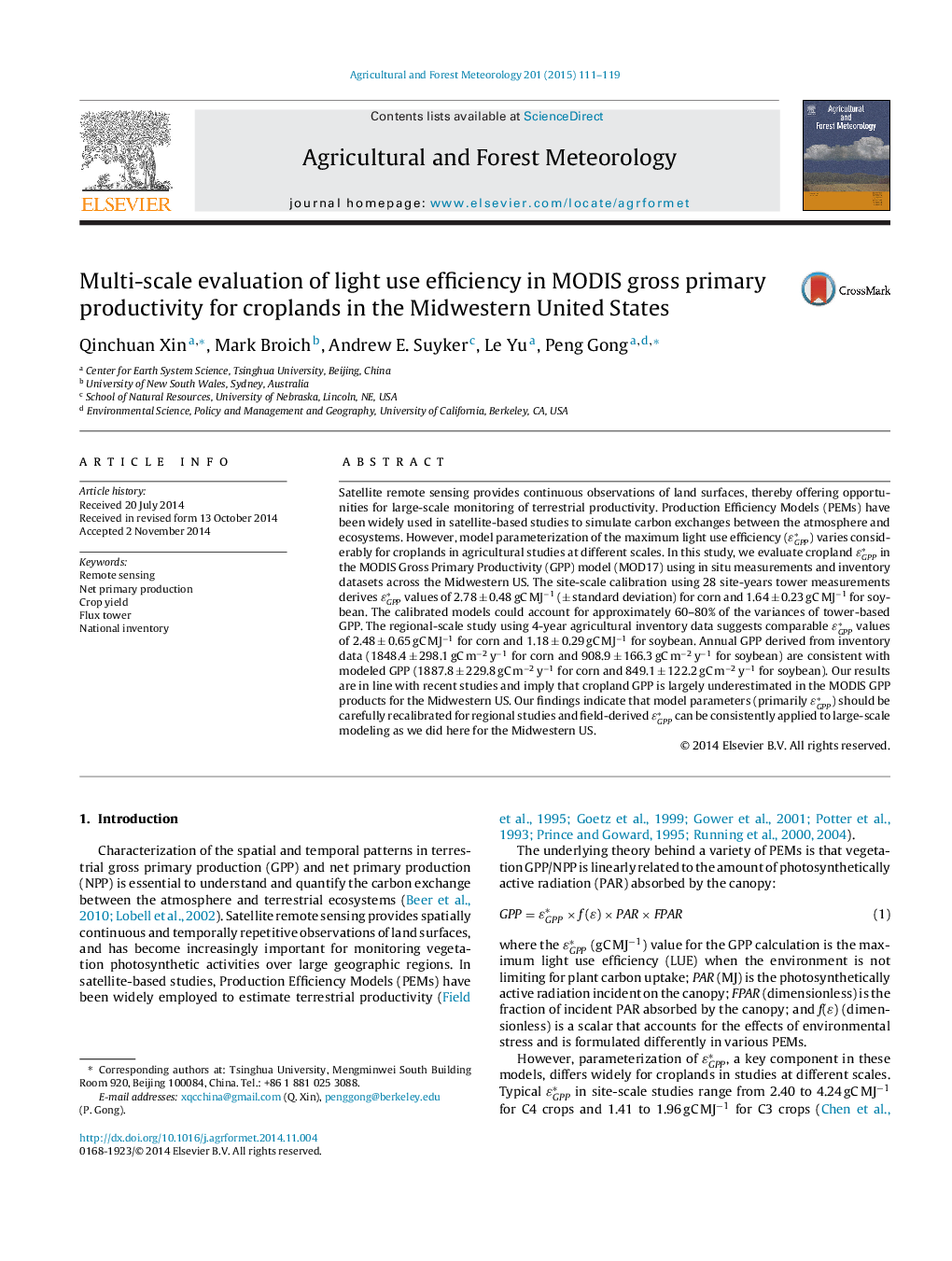| Article ID | Journal | Published Year | Pages | File Type |
|---|---|---|---|---|
| 6537404 | Agricultural and Forest Meteorology | 2015 | 9 Pages |
Abstract
Satellite remote sensing provides continuous observations of land surfaces, thereby offering opportunities for large-scale monitoring of terrestrial productivity. Production Efficiency Models (PEMs) have been widely used in satellite-based studies to simulate carbon exchanges between the atmosphere and ecosystems. However, model parameterization of the maximum light use efficiency (εGPP*) varies considerably for croplands in agricultural studies at different scales. In this study, we evaluate cropland εGPP* in the MODIS Gross Primary Productivity (GPP) model (MOD17) using in situ measurements and inventory datasets across the Midwestern US. The site-scale calibration using 28 site-years tower measurements derives εGPP* values of 2.78 ± 0.48 gC MJâ1 (± standard deviation) for corn and 1.64 ± 0.23 gC MJâ1 for soybean. The calibrated models could account for approximately 60-80% of the variances of tower-based GPP. The regional-scale study using 4-year agricultural inventory data suggests comparable εGPP* values of 2.48 ± 0.65 gC MJâ1 for corn and 1.18 ± 0.29 gC MJâ1 for soybean. Annual GPP derived from inventory data (1848.4 ± 298.1 gC mâ2 yâ1 for corn and 908.9 ± 166.3 gC mâ2 yâ1 for soybean) are consistent with modeled GPP (1887.8 ± 229.8 gC mâ2 yâ1 for corn and 849.1 ± 122.2 gC mâ2 yâ1 for soybean). Our results are in line with recent studies and imply that cropland GPP is largely underestimated in the MODIS GPP products for the Midwestern US. Our findings indicate that model parameters (primarily εGPP*) should be carefully recalibrated for regional studies and field-derived εGPP* can be consistently applied to large-scale modeling as we did here for the Midwestern US.
Related Topics
Physical Sciences and Engineering
Earth and Planetary Sciences
Atmospheric Science
Authors
Qinchuan Xin, Mark Broich, Andrew E. Suyker, Le Yu, Peng Gong,
